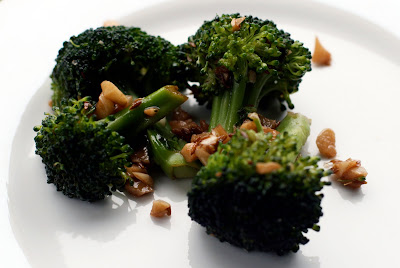
My neighbor is a somewhat evangelical member of a local women's gym. In addition to the usual elliptical trainers and weight machines, the gym has one feature she prizes above all else: a light room. This small tiled room, just big enough for four chairs, features a large full-spectrum light, an aromatherapy machine, and a pile of trashy magazines. On these rainy Northwest days (which we are still having), gym members love nothing more to sit and soak up a little vitamin D and tabloid gossip. The smell of eucalyptus will now be forever associated with the Kardashians.
Thanks to the magic of the Groupon, I've joined my neighbor these last few weeks. I've sweated and gasped through cardio workouts that probably wouldn't phase a ten-year-old, and ended up painfully sore from lifting teensy weights. And I've spent a good amount of time sitting in the light room. I keep meaning to bring my own reading material (my book club is now planning an unseasonable summer-long trip through Dickens' Bleak House), but why do that when I can read about the romantic lives of celebrities I've never heard of?
Last week I was leafing through one such magazine in the faux sun, which featured an article on weight-loss lifestyle tips of nutritionists to the stars. In addition to the usual strategies of not eating every appetizer at the party (a strategy I forgot to keep in mind last night), they recommended limiting your diet to a short list of approved foods. The idea wasn't just to keep you from eating unhealthful items, but to literally bore you into weight loss. If you're only allowed egg whites, chicken breasts, and blueberries, you evidently start eating less because you're tired of egg whites, chicken breasts, and blueberries. Which just seems sad.
Like most people, I crave variety in my diet. I try new foods and new preparations, get excited about unfamiliar techniques and cuisines. And I reckon to say that I'm more satisfied with a meal that packs an excitingly novel punch of flavors. I get on short-lived kicks where one particular ingredient or dish goes into heavy rotation, but for the most part I want to try to do new things in the kitchen. Except when it comes to green vegetables.
My preparation of chard, broccoli, spinach and the like looks like this:
1. heat a bit of olive oil
2. add garlic, saute until fragrant
3. add green vegetable, cook until done
4. squeeze lemon wedge and sprinkle salt over the top
5. eat
Every now and then I'll throw said vegetable in the defective rice cooker that serves as our steamer basket, or turn it into a Thai curry or Indian saag, but 9 times out of 10 I run through the steps above. Other members of the household have mentioned a desire for something other than garlicky lemony greens, but I generally push these requests aside. It's a culinary rut I can't seem to break out of. But that all might change with this garlicky sesame-cured broccoli salad.
This recipe comes from the never-disappointing Melissa Clark. The broccoli is technically raw, but it gets tossed with a bit of vinegar and salt (as well as some warm garlicky oil). As the broccoli sits, the acid softens it, leaving it with an addictive crunchy-yet-yielding texture, somewhere between raw and cooked, and a beautifully bright green flavor. A bit of toasted sesame oil and some cumin seeds give it a nutty depth (and go together so well I wonder why I haven't paired them before), and a pinch of chili flakes provide heat. Variety never tasted so satisfyingly delicious.

Garlicky Sesame-Cured Broccoli Salad
adapted from Melissa Clark in The New York Times
serves ~4
2 tsp vinegar of your choosing (Clark recommends red wine, we used a mix of rice wine and balsamic)
1 tsp coarse salt
2 lbs broccoli crowns (~2 large heads), washed and broken into small florets
1/3 cup olive oil
4 large cloves garlic, minced
2 tsp cumin seeds
2 tsp toasted sesame oil
large pinch crushed red chile flakes
In a large bowl, mix together the vinegar and salt. Add the broccoli, and toss to combine. Set aside.
In a large skillet, heat the olive oil until hot but not smoking. Add the garlic and cumin seeds, and cook until fragrant (it should only take a minute). Add the sesame oil and chile flakes. Turn off the heat, and pour the hot mixture over the broccoli, tossing well so that the hot oil coats everything. Let sit for at least an hour, for the broccoli to soften and the flavors to develop. Taste before serving and adjust seasonings if needed.









